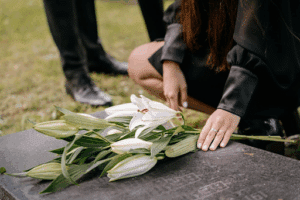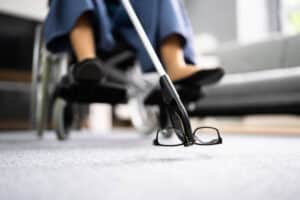
Aging is never an easy process, and it’s made worse by the fact that you may lose a loved one, and even your life partner, once you reach your later years. This is an eventuality that we’re all aware of, but it can be a huge shock when it happens, especially if your lost loved one was close enough that preparations like funeral arrangements fall to you. In this situation, as well as dealing with the loss of that important emotional connection, you may feel overwhelmed by the decisions you face.
Luckily, there’s a lot of professional advice out there about things like the best coffins or urns, and a quality funeral home should be on hand to help you with those elements. But some decisions will still rest on your shoulders, and the headstone epitaph perhaps the largest of them. After all, this small snippet of writing will mark the resting place of your loved one forevermore, and the best headstones serve to capture the essence of the person in question. That’s why we’ve put together a complete guide for helping you find the ideal words for your headstone of choice.
# 1 - Don’t do it Alone
The most important advice we can give about tackling the headstone is simply not to do it alone. If you’re relying completely on yourself, it’s all too easy to buckle under the pressure, or to end up choosing a quote or sentiment that’s limited solely to your experience of that person.
Speaking to friends or mutual acquaintances, and asking for their opinions about what would work best, is vital for taking off any pressure you feel about this decision during a difficult time. It also ensures that you’re able to see your lost loved one from other people’s perspectives, and could help to ensure that your chosen epitaph is as relevant and far-reaching as possible.
By making this decision more social, you may even find that it becomes a joyful opportunity to remember your mutual loved one, as you talk about your fondest memories together, and the words that are most apt for conveying those connections.
# 2 - Take Your Time
Funeral planning can feel like a whirlwind, especially considering that venues and funeral parlors tend to be fully booked. The sooner you start making decisions, the more promptly you can put your loved one to rest.
Many people make the mistake of assuming that the same need for speed is required when it comes to a headstone, resulting in rushed decisions. In reality, though, headstones don’t typically need to be ready by the day of the funeral. In fact, you’ll find that there’s an average wait of up to twelve months between looking at options like these flat headstones by Memorials.com and actually seeing that headstone in the ground complete with its epitaph.
With that timeframe in mind, remember that there’s really no reason to rush this decision. Instead, take your time, fully consider your options, and ask other people’s opinions before you commit to something that’s not quite right.
# 3 - Remember That you Can Keep it Simple
If you walk through a graveyard, you’ll notice that some headstone epitaphs are fun, while others feel deeply personal. More often, though, epitaphs tend to be fairly simple. And, there’s nothing wrong with going down that route.
After all, this message isn’t in place to serve as a literary masterpiece. It’s simply there to mark a life, meaning that there’s nothing wrong with choosing a simple sentiment, which could include a basic top line like ‘In loving memory’ or ‘Rest in peace’ and then the name of your loved one, followed by a message such as ‘Always in our hearts’ or the more personal ‘Loving husband and father’.
As well as generally being easier to settle on, a straightforward message like this ensures that you can easily fit everything onto your headstone. It also still serves to capture the essence and priorities of the loved one you’re honoring.
# 4 - Or Take Inspiration From the Greats
Even if you want to include a slightly more elaborate quote or sentiment, you needn’t become a pro poet overnight. In truth, there are some fantastic existing quotes out there that can work well for an epitaph, especially if they’re somehow personally relevant to your loved one.
For instance, top known quotes that are commonly used in epitaphs include options like Frank Sinatra’s ‘I did it my way’, or bible quotes such as John 14:27 ‘Peace I leave with you…’ To get ideas, consider options that might include –
- Your loved one’s favorite song lyrics
- A nickname or shared sentiment
- A poem excerpt
- A favored bible quote
- A famous or inspirational quote
# 5 - Always Double-Check Your Choice
There’s no worse feeling than settling on the ideal epitaph, only to realize when you see the finished version that you’ve left spelling or grammar mistakes, or even that you’ve misquoted someone in the process. While it is possible to change certain elements of a headstone, this can be a costly and time-consuming endeavor that you can save yourself by simply being thorough.
This is sometimes easier said than done amidst the relief of settling on the ideal epitaph message, but trust us when we say that you’ll be glad you took this step. You’ll certainly want to read and come back to your epitaph for a few days after deciding. It’s also worth having other people read what you’ve put on paper, as a new set of eyes might immediately see a mistake that you’ve missed.
Conclusion
Loss is never easy, and an epitaph may feel like just another painful task that you don’t want to tackle. In reality, though, this short message provides you with the ideal opportunity to honor your loved one and remember your cherished memories. Just be sure to make your life easier by bearing these pointers in mind when it’s time to find the ideal words.








